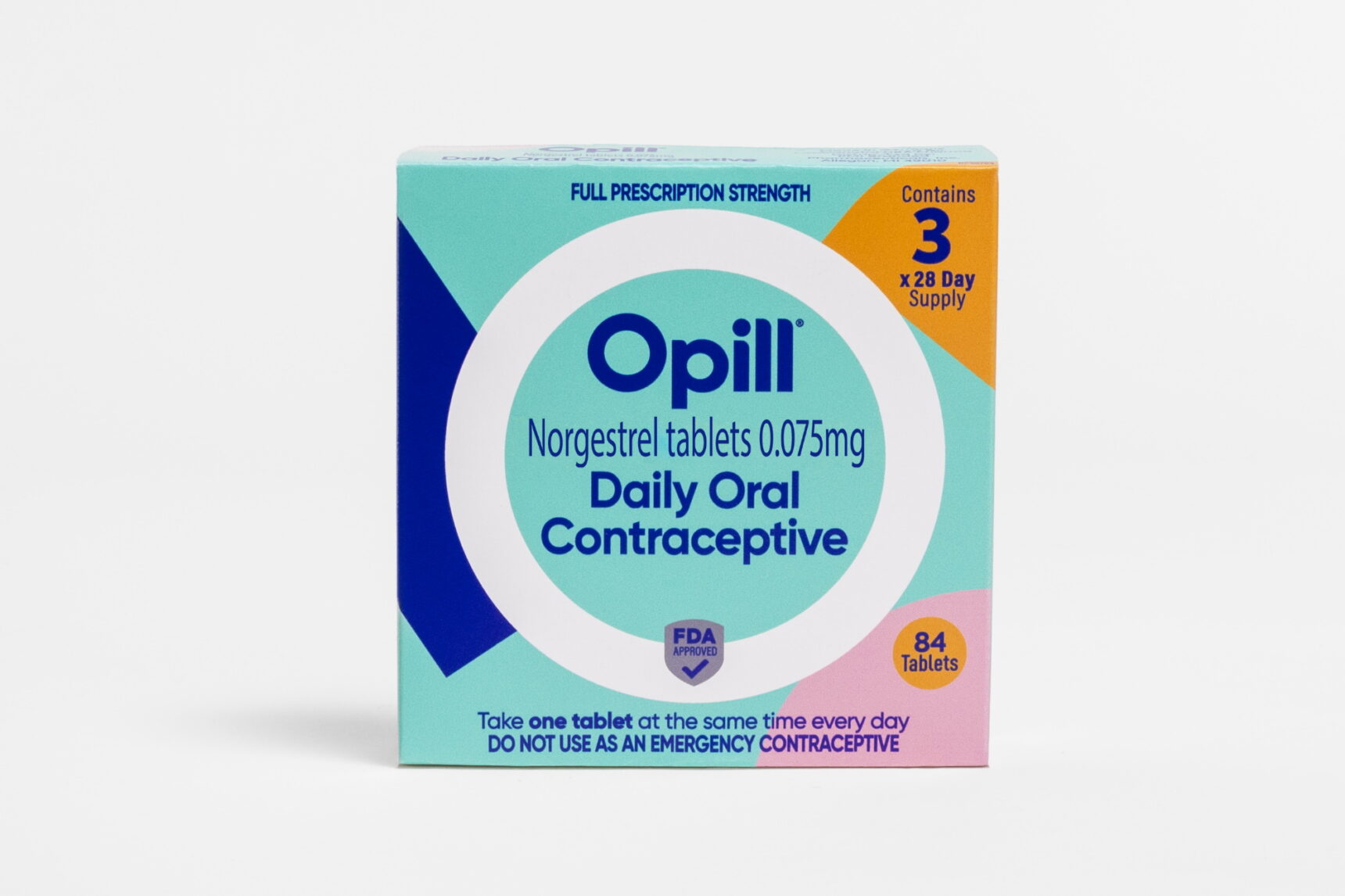The Post-Roe Landscape: Examining The Role Of OTC Birth Control

Table of Contents
Increased Demand and Accessibility of OTC Birth Control
The limitations on abortion access have led to a surge in demand for reliable and readily available contraception. This increased demand is evident across various indicators:
-
Increased searches and purchases of OTC birth control pills, patches, and rings: Online searches for terms like "emergency contraception," "OTC birth control pills," and "morning after pill" have seen significant spikes since the Roe v. Wade decision. Similarly, sales data from pharmacies and online retailers reflect a notable increase in OTC contraceptive purchases. This indicates a direct correlation between restricted abortion access and a greater reliance on preventative methods.
-
Greater pressure on healthcare providers to prescribe contraceptives: Clinics and healthcare providers are experiencing a higher volume of requests for prescription contraceptives, further highlighting the increased need for accessible birth control options. This places additional strain on already overburdened healthcare systems.
-
Discussions surrounding expanding access to FDA-approved OTC birth control options: The increased demand has fueled renewed conversations about expanding the range of FDA-approved contraceptives available over-the-counter. This includes exploring options beyond currently available methods like emergency contraceptive pills. Policymakers and advocacy groups are actively discussing ways to facilitate broader access to these essential preventative healthcare tools.
This increased demand is straining existing supply chains and leading to discussions about potential shortages. Pharmacies and online retailers are working to meet the rising demand, but ensuring consistent availability remains a key concern. The need for efficient distribution and timely restocking is paramount to prevent disruptions in access to essential OTC birth control.
The Potential of OTC Birth Control to Reduce Unintended Pregnancies
Increased accessibility to OTC birth control could significantly reduce unintended pregnancies. By making contraception more readily available and affordable, individuals can proactively manage their reproductive health.
-
Discussion of the effectiveness of various OTC contraceptive methods: While the effectiveness varies between methods, OTC options like emergency contraceptive pills, condoms, and certain hormonal contraceptives offer varying degrees of protection against pregnancy. Understanding the effectiveness of each method is critical for informed decision-making.
-
Comparison of efficacy rates with prescription methods: While some prescription contraceptives may boast slightly higher efficacy rates, OTC options provide a viable and accessible alternative for many individuals. The accessibility advantage often outweighs the minor differences in efficacy for a significant portion of the population.
-
Analysis of potential cost savings through OTC access: OTC birth control is generally less expensive than prescription contraceptives, making it a more affordable option for those with limited financial resources. This reduced cost barrier is a significant factor in improving access and reducing unintended pregnancies among low-income populations.
Wider access to OTC birth control has significant public health implications. Reduced unintended pregnancies translate to lower maternal mortality rates, fewer abortions, and decreased healthcare costs associated with prenatal care and childbirth for unwanted pregnancies. However, limitations exist, and ensuring proper use and education are crucial for maximizing effectiveness.
Obstacles and Challenges to Widespread OTC Birth Control Access
Despite its potential, several factors hinder widespread access to OTC birth control:
-
Cost remains a barrier for many individuals, especially those in low-income communities: Even OTC options can be financially prohibitive for low-income individuals. Financial assistance programs and subsidized access are crucial to ensure equitable access for all.
-
Lack of awareness and education surrounding OTC options: Many individuals lack awareness of the range of OTC contraceptive options available and their effectiveness. Public health campaigns and educational initiatives are vital in disseminating accurate information.
-
Potential for misinformation and improper use: Misinformation surrounding contraceptive methods can lead to ineffective use and unintended pregnancies. Combating misinformation through reliable sources and educational programs is essential for safe and effective use.
-
Political and regulatory hurdles to expanding access: Political and regulatory barriers can hinder the expansion of OTC birth control options. Advocacy and policy changes are crucial to overcome these obstacles.
Addressing these socioeconomic and political factors is crucial to ensuring that OTC birth control reaches those who need it most. Targeted interventions, public health campaigns, and policy changes can work in tandem to overcome these challenges.
Addressing Misinformation and Ensuring Proper Use
Reliable information is crucial for safe and effective use of OTC birth control.
-
The importance of accurate labeling and clear instructions: Clear, concise, and easily understandable labeling and instructions are essential for proper use. This reduces the risk of misuse and maximizes effectiveness.
-
Role of healthcare professionals in providing education and counseling: Healthcare providers play a vital role in providing education, counseling, and guidance on the appropriate use of OTC birth control methods.
-
Need for public health initiatives to combat misinformation: Targeted public health initiatives can address misinformation and provide reliable information about OTC contraceptive options, promoting safe and effective use.
The Future of OTC Birth Control in the Post-Roe Era
The long-term impact of increased OTC birth control access remains to be seen.
-
Potential for further legislative changes impacting access: Future legislative changes may either expand or restrict access to OTC birth control, shaping the landscape of reproductive healthcare.
-
The ongoing debate surrounding the role of the FDA in regulating OTC contraceptives: The ongoing debate about the FDA's role in regulating OTC contraceptives will continue to influence the availability and types of methods available over-the-counter.
-
Long-term effects on unintended pregnancy rates and public health: Long-term monitoring of unintended pregnancy rates and overall public health outcomes will be crucial in assessing the impact of increased OTC birth control access.
Conclusion:
The post-Roe landscape necessitates a renewed focus on accessible and affordable birth control. Expanding access to OTC birth control presents a significant opportunity to reduce unintended pregnancies and improve reproductive health outcomes. While challenges remain, addressing cost barriers, promoting education, and ensuring responsible use are crucial steps towards harnessing the full potential of OTC birth control. Let's advocate for policies that ensure everyone has access to the comprehensive reproductive healthcare they need, including affordable and easily accessible OTC birth control options.

Featured Posts
-
 Repeated Tech Outages Plague Newark Airport Passengers Face Delays
May 10, 2025
Repeated Tech Outages Plague Newark Airport Passengers Face Delays
May 10, 2025 -
 Elisabeth Borne Et La Fusion Renaissance Modem Une Ligne Politique Plus Claire
May 10, 2025
Elisabeth Borne Et La Fusion Renaissance Modem Une Ligne Politique Plus Claire
May 10, 2025 -
 Greenland And Denmark Trumps Impact On Geopolitics
May 10, 2025
Greenland And Denmark Trumps Impact On Geopolitics
May 10, 2025 -
 Golden Knights Blank Blue Jackets 4 0 Hills Strong Performance Leads Victory
May 10, 2025
Golden Knights Blank Blue Jackets 4 0 Hills Strong Performance Leads Victory
May 10, 2025 -
 Go Compare Drops Wynne Evans After Strictly Come Dancing Scandal
May 10, 2025
Go Compare Drops Wynne Evans After Strictly Come Dancing Scandal
May 10, 2025
